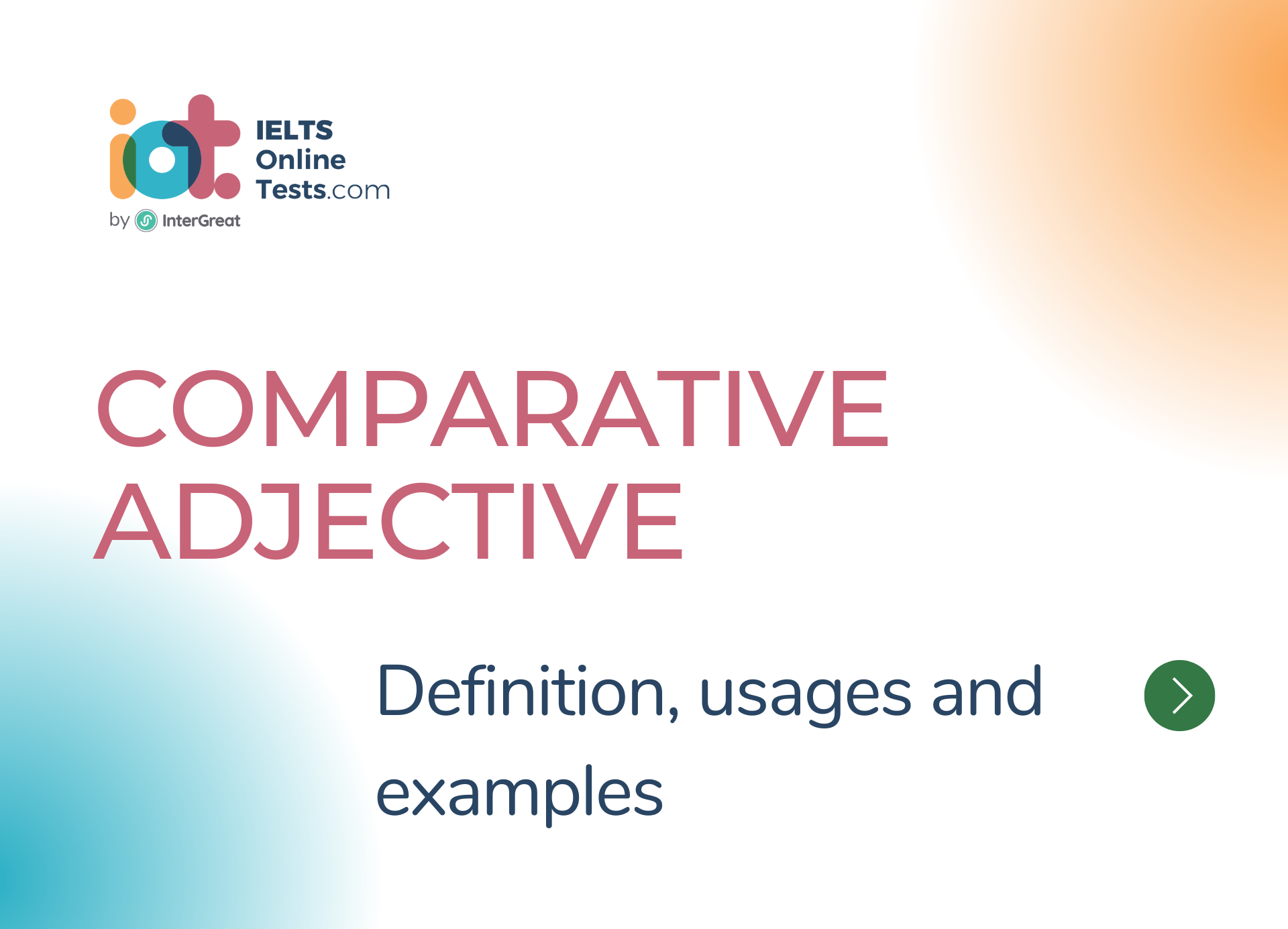
So sánh hơn của tính từ (Comparative Adjective) định nghĩa, cách sử dụng và ví dụ
So sánh hơn được hiểu là cấu trúc so sánh giữa hai hay nhiều vật/người với nhau về một hay một vài tiêu chí, trong số có một vật đạt được tiêu chí được đưa ra cao nhất so với các vật còn lại.
So sánh hơn thường được so sánh giữa hai hay nhiều vật/người khác nhau.
Dưới đây là một số thông tin về tính từ so sánh:
I. Định nghĩa:
Tính từ so sánh (comparative adjectives) là các tính từ được sử dụng để so sánh hai đối tượng, chỉ ra mức độ khác biệt giữa chúng. Khi sử dụng tính từ so sánh, chúng ta so sánh một thuộc tính hoặc đặc điểm của hai đối tượng và diễn tả một sự tăng hoặc giảm trong mức độ của thuộc tính đó.
Dạng so sánh:
- Comparative adjectives có hai dạng chính:
- So sánh hơn (comparative) và so sánh nhất (superlative).
- Dạng so sánh hơn (comparative):
- Được sử dụng để so sánh hai đối tượng.
- Dạng so sánh nhất (superlative):
- Được sử dụng để so sánh ba hoặc nhiều hơn đối tượng.
- Comparative adjectives có hai dạng chính:
II. Dạng so sánh hơn:
- Để tạo dạng so sánh hơn (comparative form) của một tính từ, chúng ta có một số quy tắc cơ bản. Phương pháp tạo dạng so sánh hơn phụ thuộc vào cấu trúc và tuyến tính của từ đó.
- Dưới đây là các quy tắc phổ biến để tạo dạng so sánh hơn của tính từ:
Tính từ ngắn (one-syllable adjectives):
Nếu tính từ kết thúc bằng một phụ âm, ta thêm "er" vào cuối từ.
Ví dụ: tall (cao) - taller (cao hơn), small (nhỏ) - smaller (nhỏ hơn)
Nếu tính từ kết thúc bằng một nguyên âm, một phụ âm kép, hoặc "w" hoặc "y" sau nguyên âm, ta nhân đôi phụ âm cuối và thêm "er" vào cuối từ.
Ví dụ: big (to) - bigger (to hơn), thin (mỏng) - thinner (mỏng hơn), new (mới) - newer (mới hơn), low (thấp) - lower (thấp hơn)
Tính từ dài (more than one syllable):
Sử dụng "more" trước tính từ.
Ví dụ: beautiful (đẹp) - more beautiful (đẹp hơn), interesting (thú vị) - more interesting (thú vị hơn).
Một số tính từ có dạng so sánh hơn không đều, nghĩa là không tuân theo quy tắc "er" hoặc "more". Chúng có các dạng so sánh hơn riêng biệt.
Ví dụ: good (tốt) - better (tốt hơn), bad (xấu) - worse (xấu hơn), far (xa) - farther/further (xa hơn).
- Các quy tắc đặc biệt:
- Có một số tính từ có dạng so sánh hơn đặc biệt:
- good (tốt) - better (tốt hơn)
- bad (xấu) - worse (xấu hơn)
- far (xa) - farther/further (xa hơn)
- Có một số tính từ không thể tạo dạng so sánh hơn. Chúng là những tính từ có ý nghĩa tuyệt đối hoặc không so sánh được.
- Ví dụ: perfect (hoàn hảo), unique (độc nhất), impossible (không thể)
- Có một số tính từ có dạng so sánh hơn đặc biệt:
III. "Than":
- "Than" là một từ được sử dụng để so sánh hai đối tượng với nhau. Nó thường được sử dụng sau tính từ so sánh hơn (comparative adjective) để đặt hai đối tượng trong một mối quan hệ so sánh.
- Dưới đây là một số thông tin chi tiết về "than":
Chức năng:
- Comparative marker "than" được sử dụng để so sánh mức độ hoặc sự khác biệt giữa hai đối tượng.
- Nó chỉ ra rằng một đối tượng có mức độ cao hơn hoặc thấp hơn so với đối tượng còn lại.
Vị trí:
- Comparative marker "than" thường được đặt sau tính từ so sánh hơn và trước đối tượng mà ta muốn so sánh.
- Ví dụ: She is taller than her sister. (Cô ấy cao hơn chị gái của cô ấy.)
Cấu trúc câu:
- Cấu trúc câu với comparative marker "than" là: [Subject] + [Verb] + [Comparative Adjective] + than + [Object].
- Ví dụ: This car is faster than that one. (Chiếc ô tô này nhanh hơn chiếc đó.)
So sánh bằng cách sử dụng "as... as":
- Để diễn đạt mức độ tương đương giữa hai đối tượng, ta sử dụng comparative marker "than" với cấu trúc "as + Comparative Adjective + as".
- Ví dụ: She is as tall as her brother. (Cô ấy cao như anh trai của cô ấy.)
IV. Dạng bất quy tắc:
- Irregular forms (dạng bất quy tắc) là các dạng so sánh của một số tính từ so sánh không tuân theo quy tắc chung. Thay vì thêm "er" hoặc sử dụng "more", các tính từ này có các dạng so sánh hơn riêng biệt.
- Dưới đây là một số ví dụ về tính từ so sánh bất quy tắc:
Good (tốt) - Better (tốt hơn)
- Ex: This is a good book, but that one is better.
Bad (xấu) - Worse (xấu hơn)
- Ex: This movie is bad, but the previous one was worse.
Far (xa) - Farther/Further (xa hơn)
- Ex: The park is far from my house, but the beach is farther.
Little (ít) - Less (ít hơn)
- Ex: She has little money, but he has less.
Many/Much (nhiều) - More (nhiều hơn)
- Ex: I have many books, but she has more.
Lưu ý rằng các quy tắc và dạng so sánh có thể có ngoại lệ và cần phải được xem xét trong ngữ cảnh cụ thể. Để sử dụng tính từ so sánh một cách chính xác, hãy lưu ý ngữ pháp và quy tắc chung và cân nhắc các trường hợp đặc biệt.




